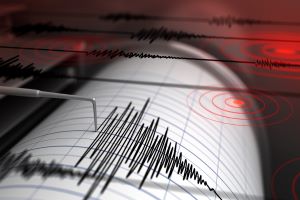
Weather experts can predict and warn people against certain types of natural disasters such as hurricanes, tornadoes, or severe storms, which allows ample opportunity to prepare. However, there is not yet a foolproof system for determining exact locations and magnitudes of upcoming earthquakes. The only failsafe way to minimize loss of life and property is to be prepared beforehand.
While we frequently associate earthquakes and California, in the United States, three of the top 10 most damaging earthquakes occurred outside of California.
Here’s what you need to know to be prepared if you live in an earthquake-prone region:
Before you prep your home, prep yourself and your family, including:
- Create an emergency meeting spot to convene and check-in near your home. Make sure you have a back-up location in case that spot is not accessible.
- Establish in-state and out-of-state point of contacts for communication.
- Put together two emergency kits—one for your home and one for your car.
- Buy battery-powered radios for your home and vehicles. (It may sound a bit old-fashioned, but it may be your only source for receiving communication in the event power lines and mobile networks go down.)
- Do a home walk-through and identify safe places in each room of your home. Communicate your findings with family members. In the event of an earthquake, be sure to stay away from windows, bookcases or tall furniture that could fall on you.
- NOTE: doorways are no stronger than any other part of a structure, so don’t rely on them for protection. During an earthquake, get under a sturdy piece of furniture.
- Identify where your home’s water, gas, and electric main shutoff valves and switches are. Make sure each family member knows how to turn them off in an emergency.
Now it’s time to prepare your home. Consider the following:
- If possible, get your home and contents insured against earthquakes. Many homeowner policies do not provide earthquake coverage, but it may be available as an additional coverage.
- Check the foundation and walls of your home for cracks or defects that may make it particularly vulnerable to earthquake damage. Have a professional make any necessary repairs.
- Consider hiring a structural engineer or certified contractor to strengthen exterior features, such as porches, decks, sliding glass doors, chimneys, car ports and garage doors.
- Anchor bookcases, large pieces of furniture, heavy mirrors, pictures, water heaters and appliances to the wall. You can also hire a contractor to do the work for you. Disengage or remove rollers from major appliances to prevent them from moving during an earthquake.
- Install latches on drawers and cabinets to prevent contents from spilling out. Heavy items and breakable items should be as close to the floor as possible.
- Have a plumber install flexible connectors on your home’s gas appliances or install a seismic gas shut-off valve on your main exterior gas line.
- Install a clear, shatterproof film over glass surfaces and windows (broken glass can get strewn about and may cause serious injuries).
- Do not hang heavy items, such as pictures and mirrors, near beds, couches and anywhere people sleep or sit.
- Put all flammable liquids in the garage or other outside storage area. To help prevent a fire after an earthquake, store them away from heat sources, like a water heater or furnace.
While no one knows exactly when the “Big One” is coming, you will have peace of mind knowing you prepared yourself, your family, and your home—everything that matters most!
For more information on personal earthquake preparedness, please visit the Chubb Catastrophe Center.
Tammy Zuvela is a Senior Risk Consultant for Chubb Personal Risk Services.
The opinions and positions expressed are the authors’ own and not those of Chubb. The information and/ or data provided herein is for informational purposes only and is not a substitute for professional advice. Insurance coverage is subject to the language of the policies as issued.